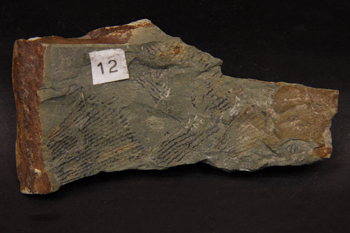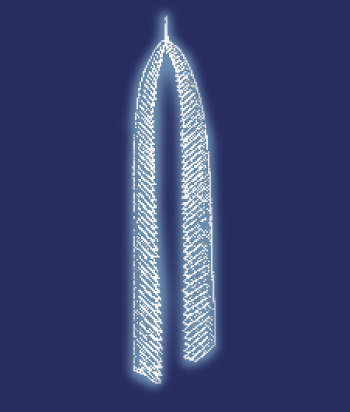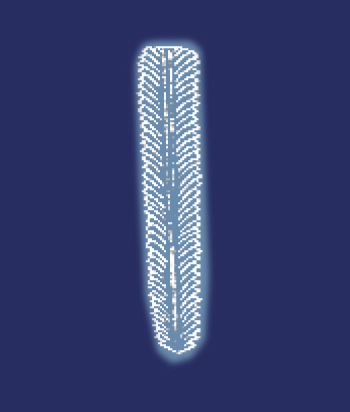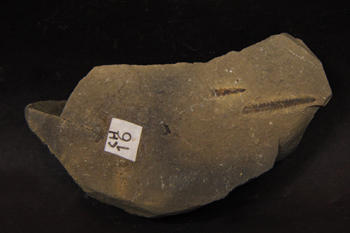|
|
 Early Paleozoic 542 - 416 million years ago Early Paleozoic 542 - 416 million years ago |
|
Graptolites - "Writing on the Rocks"
Graptolites are extinct marine colonial animals that lived in the Paleozoic oceans between the Middle Cambrian and Carboniferous. They reached their greatest diversity during the Ordovician and are important index fossils for dating Paleozoic rocks. They are usually preserved in dark-coloured mudstones where they appear as shiny pencil-like markings, hence their name derived from the Greek words graptos meaning "written" and lithos meaning "rock".
|
|
| Morphology
A graptolite was a colony of interdependent nearly identical individuals connected by common tissue, and is thought to be distantly related to vertebrates. Each colony has a variable number of branches (called stipes) originating from an initial individual (called a sicula). Each subsequent individual (zooid) was housed within a tubular or cup-like structure (called a theca). The number of branches and the arrangement of the thecae are important features in the identification of graptolite fossils.
|
|
|
| |
Dendroidea
Dendroidea are the most primitive graptolites appearing in the Lower Ordovician. They were benthic forms, which attached their colonies to the ocean floor by a root-like base and had many branches. They are thought to be the precursors of the pelagic group of Graptoloidea.
|
|

Dictyonema flabelliforma liaotungense Mu
Dendroidea, Lower Ordovician, China
Size: 7cm |
| Graptoloidea
Graptoloidea were pelagic forms derived from the dendroid graptolites at the beginning of the Ordovician. During their evolution from a benthic to a pelagic free-drifting and swimming lifestyle, graptolites developed forms with decreasing numbers of branches and an increasing complexity of the thecae. They gradually dominated the upper layers of the ocean as the Earth's first large zooplankton.

Diagram showing the evolution of Graptoloidea from the Ordovician to the Lower Silurian.
|
|
|
| Tetragraptus

|
|
|
|
Didymograptus
 |
|
|
| |
Diplograptus
single-branched, double-rowed colonies with theca on both sides
 |
|

Diplograptus fastigatus Ye
Upper Ordovician, China
Size: 1.5cm
|
|
Monograptus
single-branched, single-rowed colonies with theca on one side
 |
|
|
| |
Spiral Forms
Spiral forms of single-branched graptolites. The spiral shape provided for more efficient harvesting and prevented sinking.
single-branched, single-rowed colonies with theca on one side

|
|
|
|
|
|













